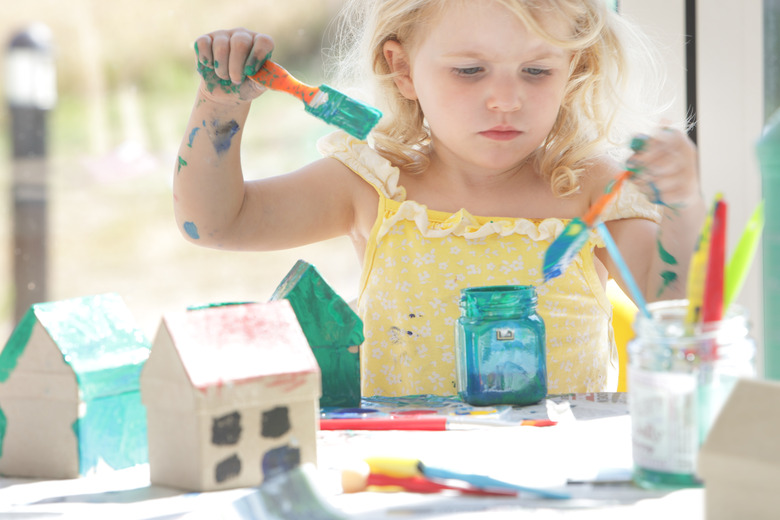The Best Way To Paint Cardboard
We may receive a commission on purchases made from links.
If you're like most people, you probably have a big supply of cardboard in your garage or basement left over from your online shopping purchases. Instead of saving them all for the next time you move or sending them directly to recycling, you can use them as a canvas for painting. Cardboard is an especially good canvas for creative kids because it's big, allows them to be expressive, and isn't expensive. Read on to find out the best way to paint cardboard. Pro tip: It's all about the prep.
Prep the Surface Properly
Prep the Surface Properly
The key to painting on cardboard effectively is to prep it properly. There's a reason artists use proper canvases and specialist paper for painting: Untreated cardboard doesn't make a perfect base for painting. It's porous, so it soaks in water, making the surface warp and become uneven for little masterpieces.
To avoid this, apply a primer to the cardboard before painting. Of course, if you're just playing around with the kids and don't intend to keep the cardboard artwork, there's no need to go to the trouble and (minimal) expense of priming the cardboard. If you'd like the artwork to have a longer life, priming is a good idea.
Prep the cardboard with a gesso primer. Gesso looks a bit like white acrylic paint but thinner. It dries hard and smooth when applied properly and will prevent paint from soaking into the surface below, so it makes a good base for painting onto all kinds of canvases, not only cardboard. Using a flat brush, paint the gesso onto the cardboard in long, smooth strokes. For best results, apply a second coat after the first has dried, painting in the opposite direction from the first layer.
Leave the gesso to dry completely before you paint over it. This may take as little as 10 minutes, although artists recommend leaving gesso-primed surfaces for up to 24 hours for best results.
The Best Paints to Use
The Best Paints to Use
Acrylic paint, spray paint, and oil paint are the best options for painting cardboard. If the cardboard artist is a child, choose acrylic paints. Oil paints are a bit more difficult to use than acrylics, take longer to dry than some other paints, and can also be toxic. They're also relatively expensive. Spray paints are fun, but if kids are young, they can be tricky to use, and there's the issue of fumes. Acrylic paints, on the other hand, are inexpensive, easy to use, and less toxic, and when they dry, they have a plasticlike surface that is quite durable.
For best results, paint the acrylic paints onto the canvas in layers. Leave each layer to dry before adding further layers.
